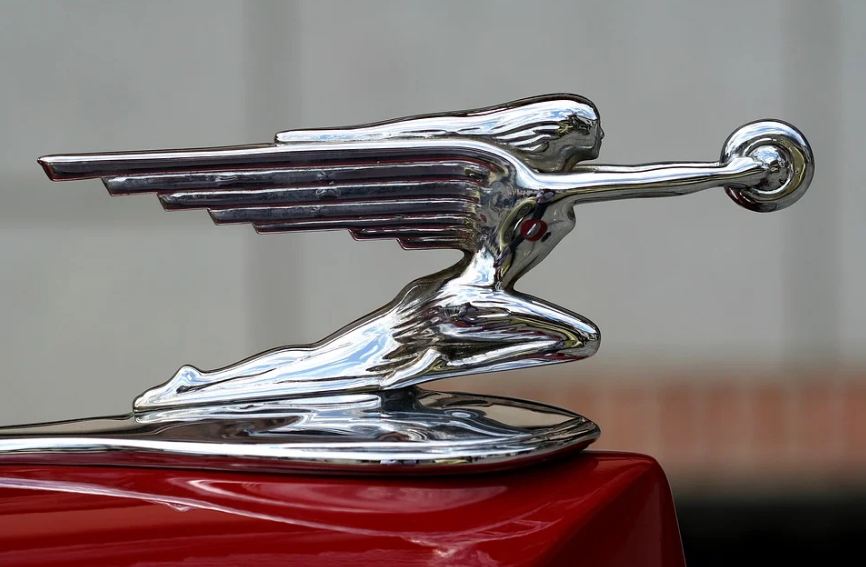The Packard Panther was a concept sports car that was built in 1954 by the Packard Motor Car Company. The company decided to build the Packard Panther as they were experimenting on applying different materials that were never seen in vehicles before. However, because of the financial problems of Packard during that time, the Packard Panther was ultimately shelved. To know more about how Packard conceptualized one of the rarest cars in the world, let us take a look at the fascinating origins of the Packard Panther
Origins of the Panther
In 1941, the Packard Motor Car Company began finding ways to utilize glass-reinforced plastic (GRP) as a material for their vehicles. GRP arose in the car industry as an alternative to steel, which was experiencing supply shortages because of the need to construct weapons and army vehicles for World War II.
By 1953, Packard has already perfect the application of GRP in their vehicles, and because of their development, they began designing cars that will feature the technology. They first decided to design a two-seat convertible sports car that will have GRP as its body.
The designer for the proposed two-seat convertible car was Richard A. Teague, who was given the job to design the Panther with a short deadline. Because he only had a short time to design the vehicle, he quickly turned over the drafts that he was working on, and Packard then approved of the design without reviewing it for a second time. Despite the hasty design, the Panther was proven to be a great car that has little to no drawbacks.
In 1954, a prototype of the Packard Panther was constructed. This prototype has ha 127-inch wheelbase Cavalier chassis, and it also has the signature metal floorpan that is seen in almost all Packard-designed vehicles. The car was supposed to be named “Grey Wolf II,” as it is supposed to serve as the second version of a popular Packard vehicle, but the management eventually decided to call it “Panther” instead so that it could launch a new line of sports cars for the company.
In order to complement its speedy appearance, the Packard Panther is equipped with a 359-cubic inch straight-eight engine, which is considered to be the biggest engine in the automotive industry during that period.
Soon after, Packard built four more Panthers, with the first two having the McCulloch centrifugal supercharges that enhances the speed and mobility of the cars. When Packard performed a test –drive on one of the Panthers, the recording crew reported that the car reached approximately 131.1 miles per hour, although this record is currently unofficial. That vehicle is said to be the second prototype of the Panther, which was equipped with a racing windshield for better protection.
Because of the financial problems and instability of Packard during the 1950s, they were never able to make production models of the Packard Panther. By 1959, the Packard Company was dissolved, although its partner, Studebaker, remained in business until 1967. The last vehicle that was designed by Packard was the Avanti, but Studebaker decided to erase Packard’s name from the vehicle’s nameplate, so it was ultimately named the Studebaker Avanti.
In the 1990s, a businessman by the name of Roy Gullickson tried to revive Packard by purchasing the company’s trademark. After the purchase, Gullickson’s team redesigned the Packard Twelve, which was supposed to be the revival line of vehicles of Packard for 1999. Unfortunately, the Packard Twelve line met the same fate as the Panther, as there were only prototypes made for the line since it wasn’t mass-produced. Gullickson eventually abandoned the idea of reviving the Packard brand. A prototype model of the revived Packard Twelve was then sold at an auction in Plymouth, Michigan, for the price of $143,000.
As for the Panther, it was reported that were only four prototypes made, and all of them are said to be hand-built. Although there were a lot of distributors and investors who are interested in the vehicle, Packard ultimately decided to cancel its production. Car enthusiasts have mixed opinions when it comes to the Panther, with some of the legitimate owners saying that it doesn’t have enough power to be a sports car, but it does look stunning.
When Richard A. Teague was asked about what he thought about the Panther, he stated that he wasn’t particularly fond of the said vehicle, although he there isn’t any of his designs that he didn’t like. Not much is actually known about what happened to all four prototypes of the Panther, but one of the prototypes is currently in possession of the Mitchell-Bentley Corporation, a car company located in Owosso, Michigan. It is believed that the said company was the one who applied the finishing touches to the prototypes, including its silver finish. The prototyped owned by Mitchell-Bentley is currently on display in their private museum that is also located in Owosso.


